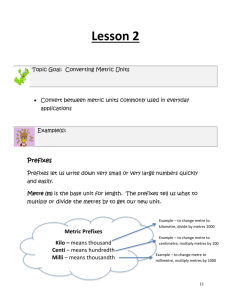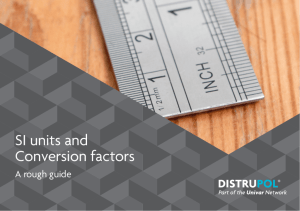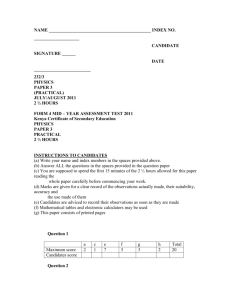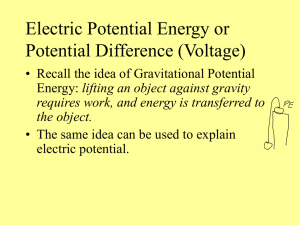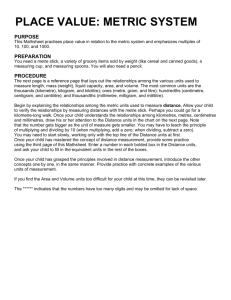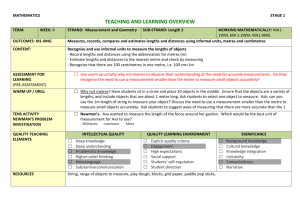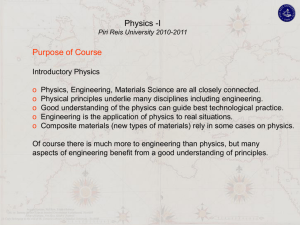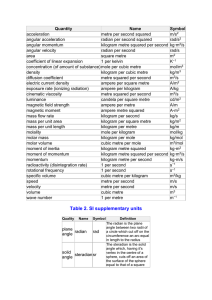International System of Units (SI) Guide
advertisement
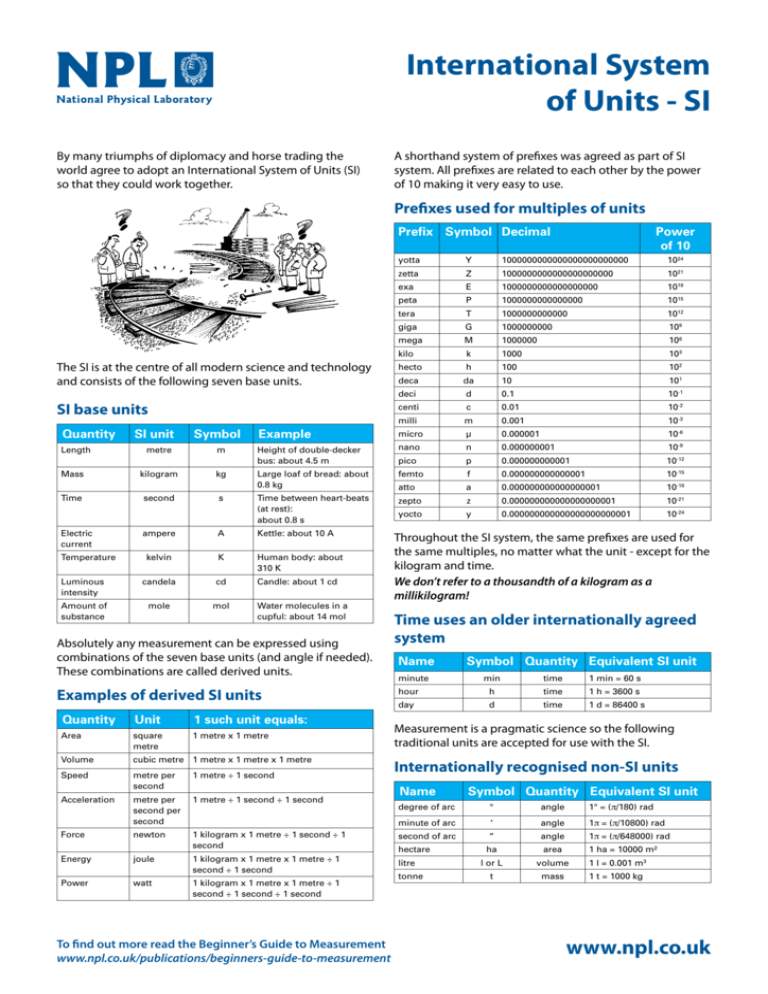
International System of Units - SI By many triumphs of diplomacy and horse trading the world agree to adopt an International System of Units (SI) so that they could work together. A shorthand system of prefixes was agreed as part of SI system. All prefixes are related to each other by the power of 10 making it very easy to use. Prefixes used for multiples of units Prefix Symbol Decimal yotta Y 1000000000000000000000000 1024 zetta Z 1000000000000000000000 1021 exa E 1000000000000000000 1018 peta P 1000000000000000 1015 tera T 1000000000000 1012 giga G 1000000000 109 mega M 1000000 106 kilo k 1000 103 hecto h 100 102 deca da 10 101 deci d 0.1 10-1 centi c 0.01 10-2 milli m 0.001 10-3 Example micro µ 0.000001 10-6 Height of double-decker bus: about 4.5 m nano n 0.000000001 10-9 pico p 0.000000000001 10-12 Large loaf of bread: about 0.8 kg femto f 0.000000000000001 10-15 atto a 0.000000000000000001 10-18 Time between heart-beats (at rest): about 0.8 s zepto z 0.000000000000000000001 10-21 yocto y 0.000000000000000000000001 10-24 The SI is at the centre of all modern science and technology and consists of the following seven base units. SI base units Quantity Length Mass Time Electric current SI unit metre kilogram second Symbol m kg s ampere A Kettle: about 10 A kelvin K Human body: about 310 K Luminous intensity candela cd Candle: about 1 cd Amount of substance mole mol Temperature Power of 10 Water molecules in a cupful: about 14 mol Absolutely any measurement can be expressed using combinations of the seven base units (and angle if needed). These combinations are called derived units. Examples of derived SI units Quantity Unit 1 such unit equals: Area square metre 1 metre x 1 metre Volume cubic metre 1 metre x 1 metre x 1 metre Speed metre per second 1 metre ÷ 1 second Acceleration metre per second per second 1 metre ÷ 1 second ÷ 1 second Force newton 1 kilogram x 1 metre ÷ 1 second ÷ 1 second Energy joule 1 kilogram x 1 metre x 1 metre ÷ 1 second ÷ 1 second Power watt 1 kilogram x 1 metre x 1 metre ÷ 1 second ÷ 1 second ÷ 1 second To find out more read the Beginner’s Guide to Measurement www.npl.co.uk/publications/beginners-guide-to-measurement Throughout the SI system, the same prefixes are used for the same multiples, no matter what the unit - except for the kilogram and time. We don’t refer to a thousandth of a kilogram as a millikilogram! Time uses an older internationally agreed system Name minute Symbol Quantity Equivalent SI unit min time 1 min = 60 s hour h time 1 h = 3600 s day d time 1 d = 86400 s Measurement is a pragmatic science so the following traditional units are accepted for use with the SI. Internationally recognised non-SI units Name Symbol Quantity Equivalent SI unit degree of arc ° angle 1° = (π/180) rad minute of arc ‘ angle 1π = (π/10800) rad second of arc “ angle 1π = (π/648000) rad ha area 1 ha = 10000 m² l or L volume 1 l = 0.001 m3 t mass 1 t = 1000 kg hectare litre tonne www.npl.co.uk


